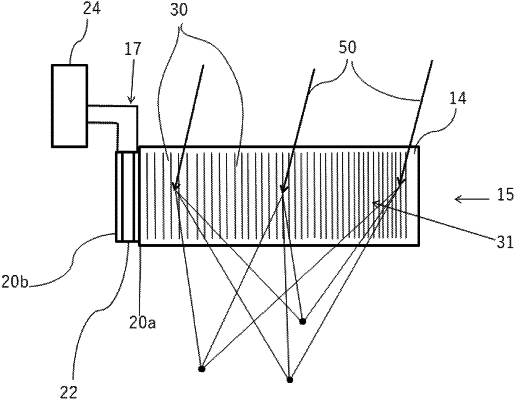| CPC G02F 1/33 (2013.01) [G01N 21/645 (2013.01); G01N 2021/6463 (2013.01); G01N 2201/106 (2013.01)] | 20 Claims |

|
1. Method for scanning with an optical beam (50) using a first acousto-optic deflector (15, 15′) having an optical axis along a Z-axis and at least one acousto-optic crystal layer (14), characterised by directing the optical beam (50) into the first acousto-optic deflector (15, 15′), and deflecting the optical beam (50) along an X-axis being perpendicular to the Z-axis by means of the first acousto-optic deflector (15, 15′), during which a plurality of acoustic chirp signals (30) are generated in the at least one acousto-optic crystal layer (14) of the acousto-optic deflector (15, 15′) by
generating a first acoustic chirp signal (30a) having a time duration of τ in the acousto-optic crystal layer (14) using a single electro-acoustic wave generator (17) connected to the crystal layer (14) by applying a first voltage signal to the electro-acoustic wave generator, then
generating a second acoustic chirp signal (30b) in the acousto-optic crystal layer (14) within a τ period of time counted from the start of the generation of the first acoustic chirp signal (30a) by applying a second voltage signal to the electro-acoustic wave generator while the first acoustic chirp signal (30a) is generated;
wherein said acoustic chirp signals (30a, 30b) are at least partially overlapping in the crystal layer (14).
|